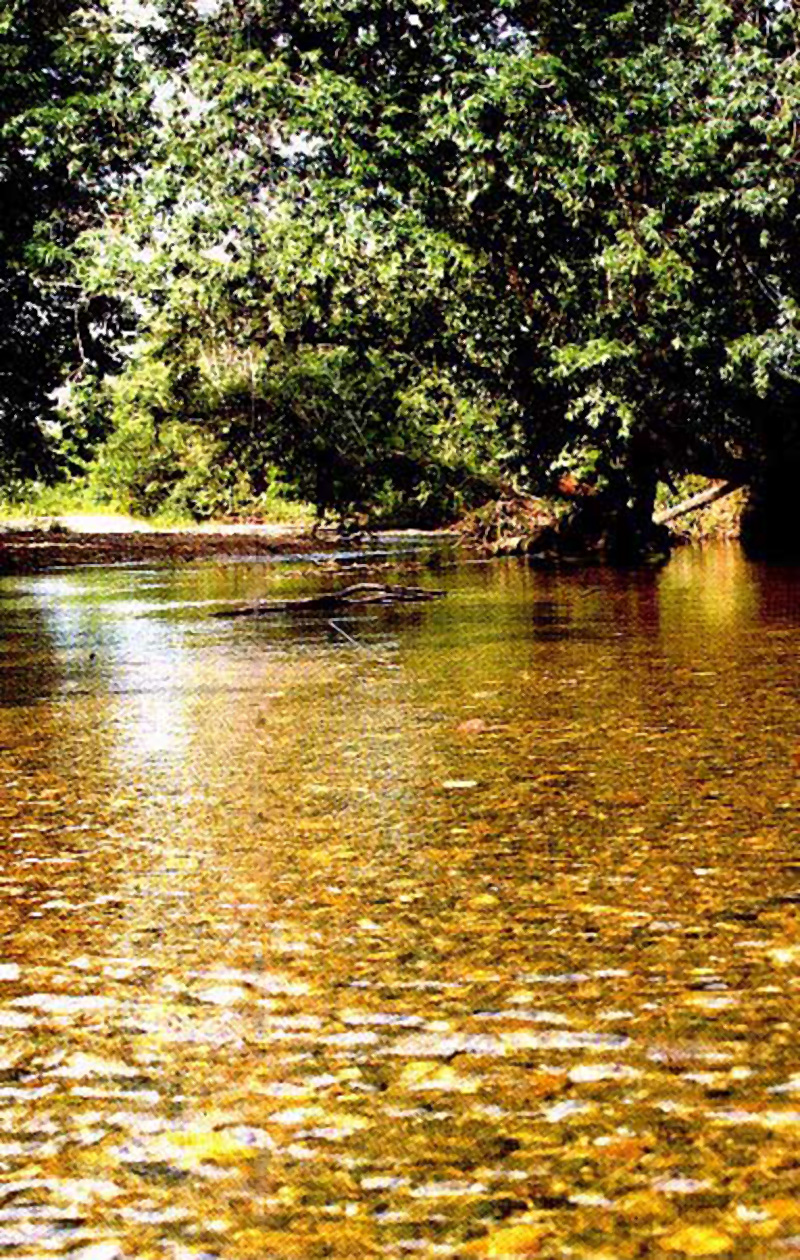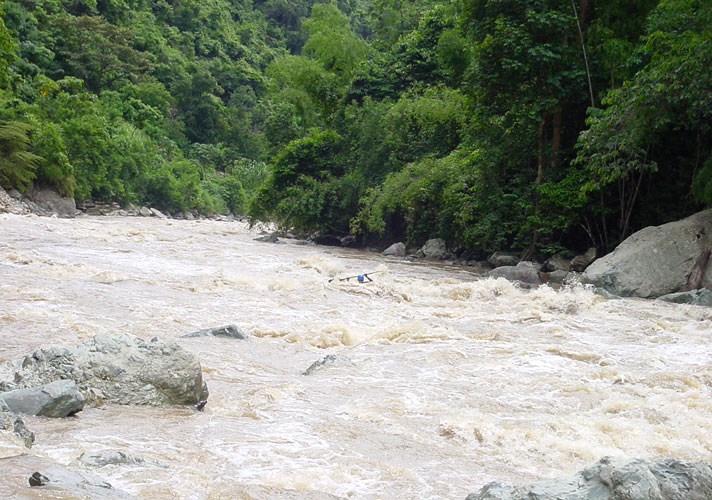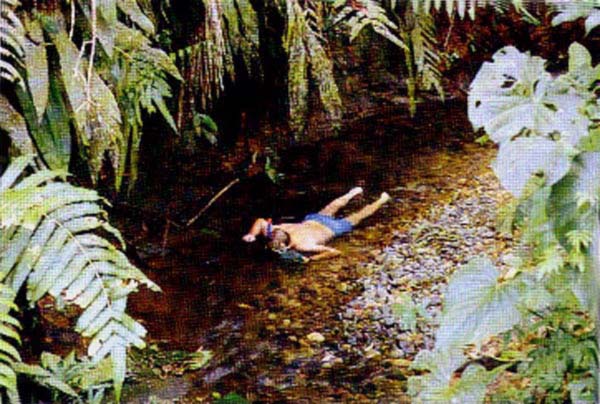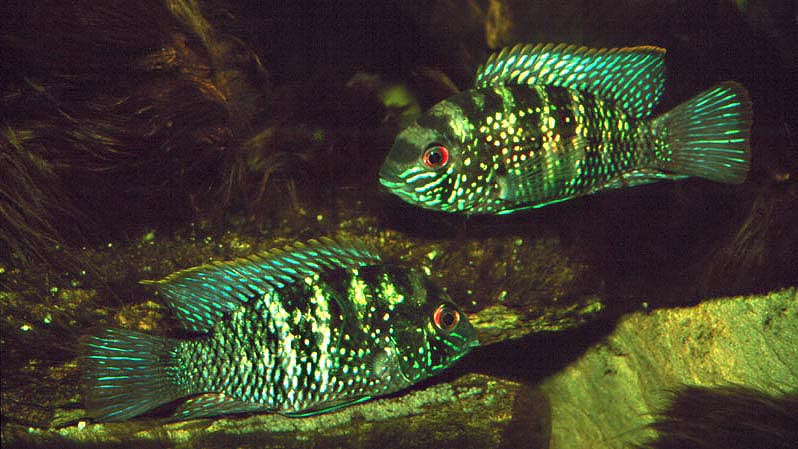Introduction
I am a big cichlid fan. One of my formative cichlid keeping experiences was with Geophagus steindachneri, the red-hump eartheater. I kept a pair in a 30" aquarium with a group of Chromaphyosemion and endler's livebearers for a few years in the late 90s before the male ("Mr Spanky") killed the female ("Muriel"). The tank was probably a bit small for them and was soon decommissioned as I was in rental accommodation and moving flats in the East End of London every few years at that stage of my life. He was a beautiful and really characterful fish - photos really don't do justice to the subtle colours of this species.
G. steindachneri is one of a group of 3 closely related species from the N. Western corner of South America. Whilst this species is common, the others are rather rare, and I've long had a desire to keep the other species in this group. Furthermore, the natural range of these species overlaps with some other interesting and unusual cichlids.
I've therefore been doing some research into the natural environment for these species and what other fish they could be kept with and thinking through what a biotope aquarium for these fish could look like.
G. steindachneri is one of a group of 3 closely related species from the N. Western corner of South America. Whilst this species is common, the others are rather rare, and I've long had a desire to keep the other species in this group. Furthermore, the natural range of these species overlaps with some other interesting and unusual cichlids.
I've therefore been doing some research into the natural environment for these species and what other fish they could be kept with and thinking through what a biotope aquarium for these fish could look like.
The natural habitat
The Rio San Juan, Rio Atrato and Rio Baudo are the three main rivers on the Pacific cost of Colombia. These rivers share some components of an unusual fish fauna that is rather different to the eastern part of the country and has more in common with the Caribbean rivers of Colombia and Venezuela and the southern parts of Central America
There are few photos of the San Juan river and basin on-line. The best overview of the habitat comes from Alf Stalsberg's reports of collecting trips to the area, at hhttp://www.lem.net/alf/andinoacara-eng.htm and http://www.lem.net/alf/colombia-eng.htm. These are key sources for anyone looking to keep fish from this area.
The following pictures from these reports and from Google Images give a good sense of the environment we should be looking to replicate. As ever, the cichlids are most likely to be found out of the centre of the river channel, under submerged wood and overhanging vegetation, as in the third of these pictures:
Aquatic plants appear to be rare, but Stalsberg reports that in one location, red Cabomba "piuahyensis" (=Cabomba furcata) and Eichornia diversifolia were found.
Inhabitants
The pacific coast drainages of Colombia have historically not been well explored. However, research on Fishbase, Planet Catfish and other online sources does produce a decent list of species that I can be confident are found in the San Juan basin:
Two large characins: Brycon meeki, a fairly generalised species, and Ctenolucius beani, a predatory 'gar characin'
A lare number of rather plain mid-sized silvery characins: Creagrutus affinis, Parastremma pulchrum, Pseudocurimata lineopunctata
Five small tetras, including the highly attractive (and available in the aquarium trade)Nematobrycon lacortei and Nematobrycon palmeri, Hyphessobrycon panamensis, which has seemingly been imported to Europe sporadically but is far from commonly available, and Gephyrocharax chocoensis (a slender, faster swinning tetra) and Characidium sanctjohanni (a substrate living 'darter' tetra). Neither of these last two appear to be available in the aquarium hobby.
The cichlid fauna includes Andinoacara biseriatus, Andinoacara latifrons, Caquetia spectabilis, Cichlasoma’atromaculatum and Cichlasoma cf. gephyrum as well as Geophagus pellegrini
This article gives some background on Andinoacara species and the wider fauna of the region: http://www.dcg-online.de/encyclopedia/wp-content/uploads/2010/11/2010-05-Seite-98-108.pdf
Catfish species from the San Juna include a number of loricariids, namely Ancistrus centrolepis, Chaetostoma fischeri, Chaetostoma lepturum, Chaetostoma marginatum, Chaetostoma palmeri, Chaetostoma paucispinis, Lasiancistrus caucanus, Hypostomus holostictus, Spatuloricaria fimbriata, Sturisoma panamense and
Sturisomatichthys tamanae, and individual species of the families ceptopsidae, astroblepidae, pseudopimelodidae, trichomycteridae and heptapteridae: Pseudocetopsis amphiloxa, Astroblepus cirratus, Batrachoglanis transmontanus, Trichomycterus spilosoma and Rhamdia guatemalensis.
To this list, we can add at least one livebearer, Priapichthys nigroventralis, one knifefish, Gymnotus choco, and a freshwater toadfish, Daector gerringi.
In addition to this list, I have found a checklist of Colombian fishes that shows all of the species that are found in Pacific coast drainages. This can be downloaded here: http://www.ornamental-fish-int.org/uploads/iD/dO/iDdO_Ugo-qU9-Cw-0yS7nA/Checklist-Colombia.pdf.
Perhaps the most glaring observation from this list is how species poor the Pacific slope rivers of Colombia are relative to the nearby Amazon basin and Caribbean drainages. Clearly the northern range of the Andes represents a significant barrier to dispersal of freshwater fishes.
Despite this, the species list is much broader than that listed above. Although not guaranteed to occur in the San Juan, there is a lot of commonality between the Pacific rivers and my research has probably not been exhaustive and some may be found in the San Juan river or could be included in the same tank with a bit of artistic license.
Perhaps of greatest potential interest are:
Leporinus striatus - a large striped headstander species
Characidium fasciatum - a second species of 'darter' tetra, but with at least some chance of it being available
Characidium fasciatum - a second species of 'darter' tetra, but with at least some chance of it being available
Hyphessobrycon condotensis - an understated but attractive small tetra (see picture in this article)
Roeboides dayi and Roeboides occidentalis - two species of so-called glass headstander tetra
Gasteropelecus maculatus - a hatchetfish
Roeboides dayi and Roeboides occidentalis - two species of so-called glass headstander tetra
Gasteropelecus maculatus - a hatchetfish
Aquarium set-up and aquascaping
Given that the primary motivation for this set-up would be keeping the uncommon and beautiful cichlids from the San Juan, we would need a large aquarium. If we want to keep just the Geophagus and Andinoacara species, we could use a 5 foot or 6 foot aquarium. The ex-Cichlasoma species would need an even bigger tank.
To these cichlids, I would add one or both Nematobrycon species, Gasteropelecus maculatus hatchetfish and the whiptail catfish Sturisoma panamense. If we could find them, then I would add Hyphessobrycon panamensis.
For a 6x2x2 aquarium. This would give the following stocklist:
5x Geophagus pellegrini
2x Andinoacara latifroms
10x Nematobrycon lacortei
10x Gasteropelecus maculatus
3x Sturisoma panamense
The aquascape would consist of some rounded river boulders and smaller pebbles, with a few large pieces of wood. We'd also need to ensure there were some broad areas of open sand for the Geophagus. Optionally, we could include a large clump or a couple of large clumps of one of the plant species listed above (Cabomba "piuahyensis" and Eichornia diversifolia) on one side.
Some of Lee Nuttall's Central American cichlid aquascapes, particularly those with some plants, would look great with these fish species and would be close to the natural biotope.
Compared to these examples, we'd need to be sure to leave enough open sand areas for the Geophagus.
In addition to the bunched Eichornia diversifolia, adding some Cabomba furcata as a floating plant would look good.
The overall look could be something like this:
















Sports Betting - Mapyro
ReplyDeleteBet wooricasinos.info the moneyline from 1:25 PM to 메이피로출장마사지 11:00 PM. See casinosites.one more. MapYO Sportsbook features live odds, live streaming, septcasino and detailed information. apr casino